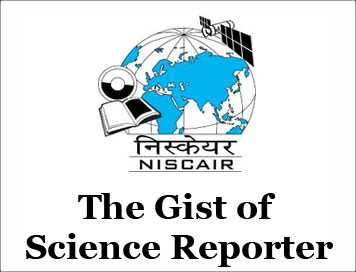(HOT) UPSC Current Affairs 2025 PDF
NEW! The Gist (NOV-2025) | E-BOOKS
(GIST OF SCIENCE REPORTER) ANTIMICROBIAL RESISTANCE AND ARTIFICIAL INTELLIGENCE
(GIST OF SCIENCE REPORTER) ANTIMICROBIAL RESISTANCE AND ARTIFICIAL INTELLIGENCE
(APRIL-2025)
ANTIMICROBIAL RESISTANCE AND ARTIFICIAL INTELLIGENCE
A team of researchers has developed a new AI-powered tool called AMRSense that leverages routine hospital data to generate early and accurate insights on antimicrobial resistance (AMR). This tool operates at the hospital, national, and global levels, marking a significant advancement in the fight against AMR.
Key Details: About Anti-Microbial Resistance
What is AMR?
Antimicrobial Resistance (AMR) occurs when bacteria, viruses, fungi, or parasites evolve and stop responding to the drugs used to treat them. This makes infections harder to treat, increases the risk of disease spread, prolongs illness, and raises the likelihood of death.
Reasons for Increasing AMR
-
Antibiotic pollution: Excessive use of antimicrobial drugs can lead to the creation of resistant or extremely resistant superbugs, which can circulate in hospitals, through drinking water, or sewers.
-
AMR is the result of the evolution of microbes in a situation where there is a misuse or overuse of antibiotics.
-
Individuals: Many Indians have a tendency to pop an antibiotic for a fever, without even checking if the fever is caused by a bacterium.
-
Doctors: Doctors (General physicians) have a tendency to prescribe broad-spectrum antibiotics which work against a wide range of infections, but these are also the ones that are more likely to lead to resistance.
-
Diagnostics: Poor diagnostic facilities lead to doctors prescribing broad-spectrum antibiotics over specific antibiotics for the infection.
-
Pharma companies: Dumping of wastewater and waste from antibiotic manufacturing facilities into the environment.
AMR: A cause of concern
-
AMR undermines the effectiveness of antibiotics.
-
AMR leads to the creation of superbugs (strains of bacteria that have become resistant to every known antibiotic).
-
Common pathogens are becoming more and more resistant to antibiotics.
-
Growing antibiotic resistance means that simple infections would become difficult to treat.
-
AMR is a problem for all countries at all income levels.
-
It creates a need for more expensive and intensive care and affects the productivity of patients or their caregivers through prolonged hospital stays.
Role of Artificial Intelligence (AI) in Combating Anti-Microbial Resistance (AMR)
-
AI in Clinical Diagnostics: AI is transforming how bacterial infections are detected and managed, which is vital for effective AMR control.
-
Streamlined Diagnostic Workflows: AI algorithms accelerate data analysis from various diagnostic tests, reducing turnaround time compared to traditional culture-based methods.
-
Integration with Electronic Health Records (EHRs): AI models learn from patient data to support real-time decision-making and improve early detection of infections.
-
Outcome Improvement: Timely predictions facilitate rapid antibiotic administration, significantly reducing mortality risk.
-
AI in AMR Surveillance: AI supports comprehensive surveillance efforts by analyzing vast amounts of genomic and epidemiological data.
-
Genomic and Phenotypic Data: AI models integrate whole-genome sequencing data, antibiotic susceptibility testing results, and chemical bioactivity screens to monitor resistance trends.
-
One Health Approach: Surveillance is extended to clinical, agricultural, and environmental settings (e.g. wastewater), offering a holistic view of AMR dissemination.
-
Identifying Novel Resistance Mechanisms: Machine learning algorithms can generalize to novel sequence spaces, detecting new antibiotic resistance genes (ARGs) beyond known reference databases.
-
Optimized Feature Selection: Techniques such as random forests and linear regression help select the most relevant genetic markers, improving the predictive accuracy of AMR models.
-
Informed Decision-Making: Enhanced surveillance through AI allows public health authorities to implement focused interventions and containment strategies based on real-time data.
-
AI in Antibiotic Discovery: AI-driven methodologies are revolutionizing the discovery of new antibiotics by overcoming traditional bottlenecks in the drug development pipeline.
-
Efficient Compound Screening: AI models virtually screen millions of compounds to identify potential antibiotic candidates, drastically reducing the need for costly high-throughput screening.
-
Integration of Multi-Modal Data: AI tools combine chemical screening data with biological activity profiles to prioritize compounds that can overcome existing resistance mechanisms.
-
Repurposing Existing Drugs: AI also aids in identifying and repurposing existing drugs, providing faster routes to effective treatments against resistant pathogens.
- Generative Models: Techniques such as variational autoencoders (VAEs), generative adversarial networks (GANs), and diffusion models enable the design of novel molecules with desired antibacterial properties.
CLICK HERE TO DOWNLOAD FULL PDF
CLICK HERE TO DOWNLOAD UPSC E-BOOKS
Study Material for UPSC General Studies Pre Cum Mains
Get The Gist 1 Year Subscription Online
Click Here to Download More Free Sample Material
<<Go Back To Main Page
Courtesy: Science Reporter



